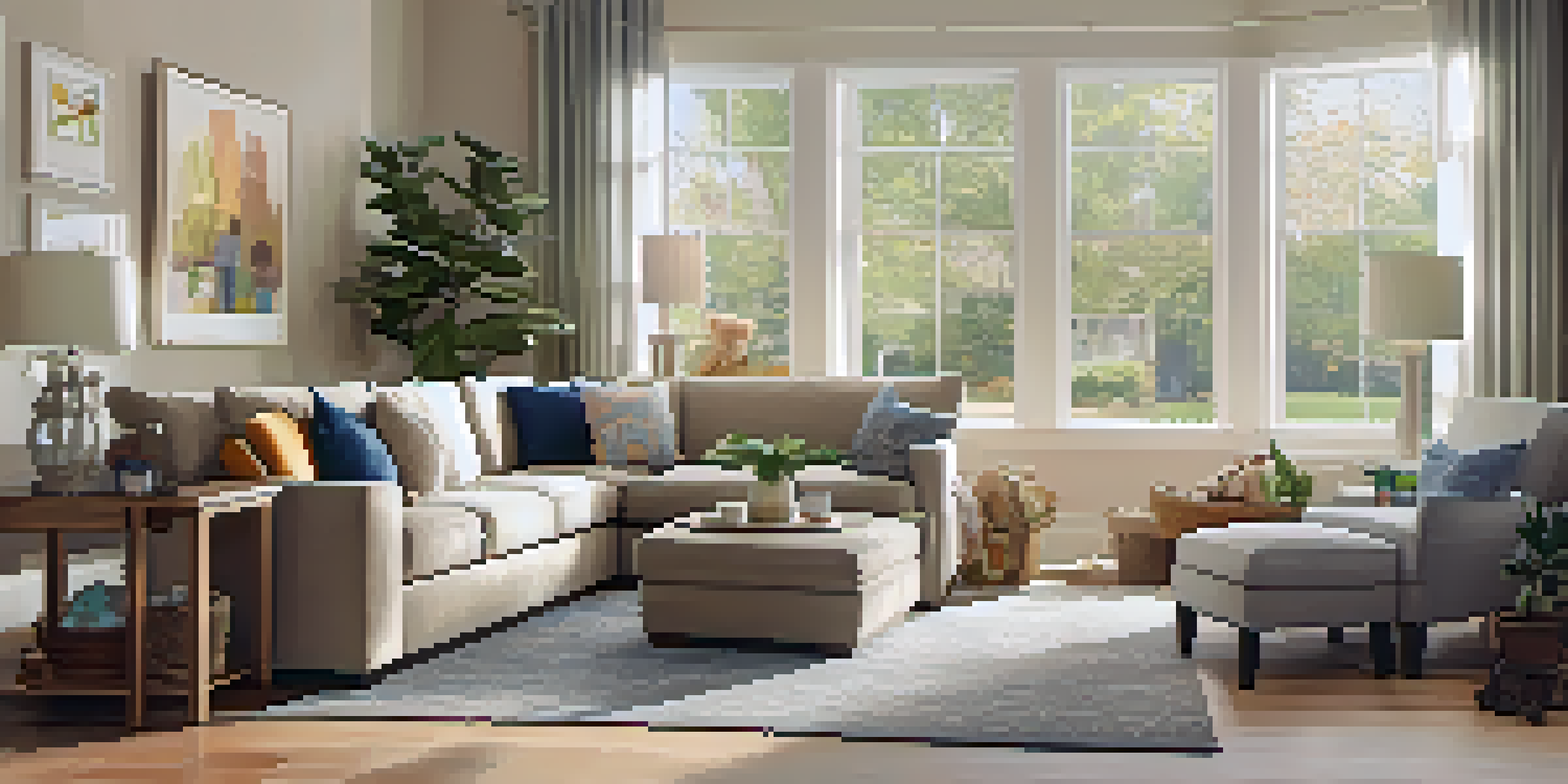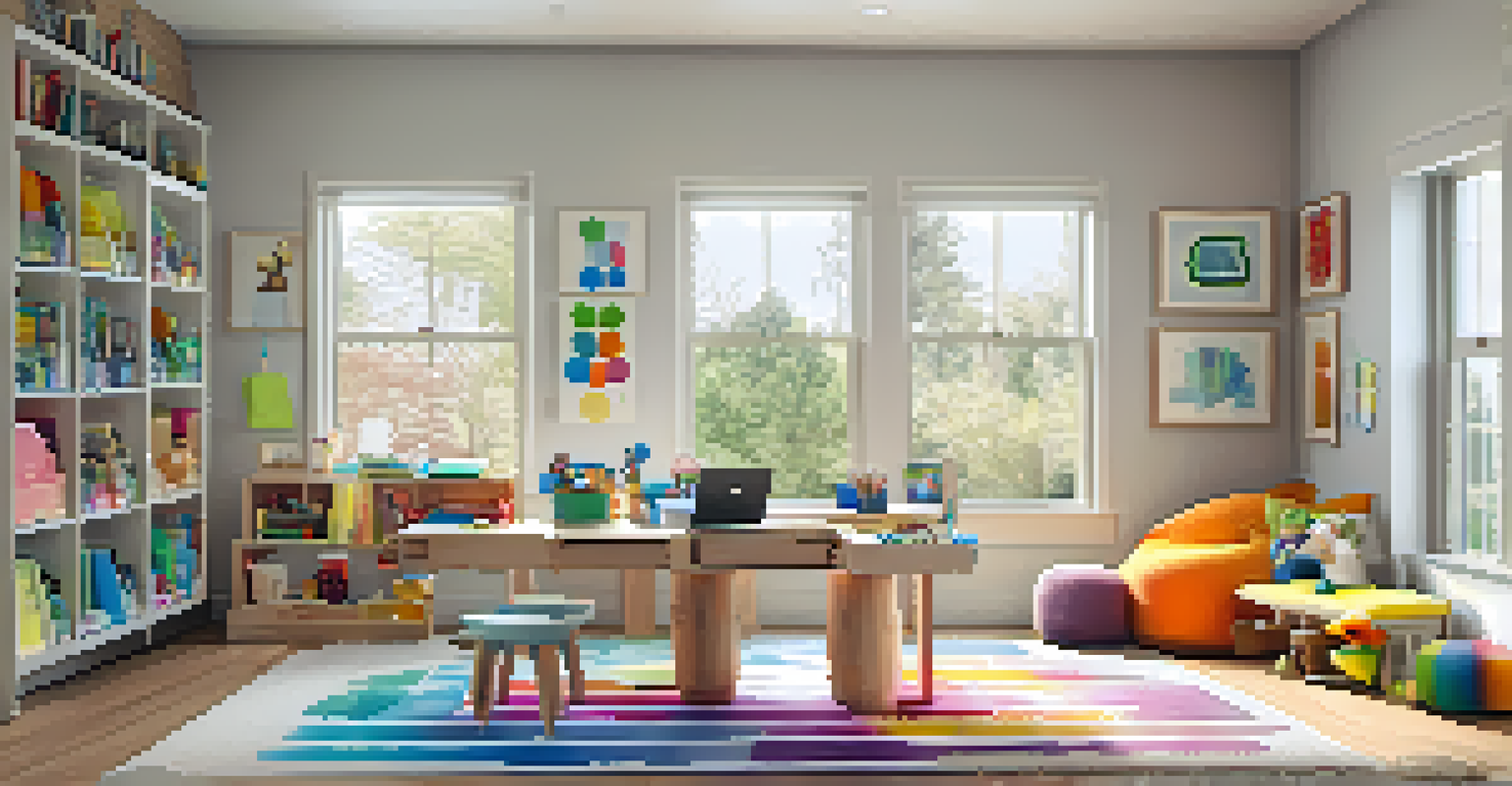Not Factoring in Family Needs in Renovation Planning

Understanding Family Needs Before Renovations Begin
Before diving into any renovation project, it's crucial to understand the needs of your family. Each family member may have different requirements, whether it's space for kids to play or a quiet area for study. By taking the time to gather input from everyone, you can create a more inclusive and functional living space.
Home is not just a place, it's a feeling.
For example, if you have young children, safety features and play areas might be a top priority. Conversely, if you work from home, you may need a dedicated office space. Failing to consider these varying needs can result in design choices that don't serve your family's lifestyle well.
Moreover, understanding family dynamics can help you prioritize what changes will have the most significant impact. Open discussions about what everyone values in their living space will lead to renovations that enhance daily life instead of complicating it.
The Risks of Overlooking Family Dynamics
When planning renovations, ignoring family dynamics can lead to significant issues down the line. For instance, a newly remodeled kitchen that lacks space for family gatherings may leave everyone feeling cramped and disconnected. This can create frustration and a sense of imbalance in the household.

Additionally, renovations that don't consider the routines of family members can disrupt daily life. Imagine a home with a beautifully designed open floor plan that overlooks the need for a quiet retreat for a teenager or a cozy nook for reading. These oversights can lead to areas of the home being underutilized or even resented.
Understand Family Needs First
Gathering input from all family members is essential to create a functional living space that meets everyone's unique requirements.
Ultimately, the goal of any renovation should be to create a harmonious living environment. By factoring in family dynamics, you can avoid unnecessary conflicts and ensure that everyone feels comfortable and at home.
Gathering Family Input: A Collaborative Approach
One of the best ways to ensure that family needs are met is to involve everyone in the planning process. Set aside time for family meetings where everyone can voice their opinions and preferences. This collaborative approach not only fosters a sense of ownership but also brings out ideas that you may not have considered.
The best rooms have something to say about the people who live in them.
You might find that your spouse has a vision for an outdoor space while your kids have dreams of a fun playroom. Incorporating these insights will make your renovation feel more personal and tailored to your family's lifestyle. Plus, it can turn what might feel like a daunting task into an exciting adventure.
Remember, renovations can be a significant investment of time and money. By ensuring that everyone's voice is heard, you're more likely to create a space that meets the needs of your entire family and makes the investment worthwhile.
Creating Functional Spaces for Everyone
Functionality is key when it comes to renovations, especially in homes with diverse family needs. Each area of your home should serve a purpose that aligns with the day-to-day activities of your family members. For instance, a multipurpose room can provide space for both work and play, making it adaptable as your family's needs change over time.
Think about how different family members use their spaces. A teenager may need a quiet study area, while younger children require a safe play zone. Designing spaces that cater to these varying needs can prevent frustration and ensure that everyone feels comfortable at home.
Involve Everyone in Planning
A collaborative approach to renovations fosters ownership and helps uncover ideas that reflect the family's lifestyle.
As you plan your renovations, consider modular furniture or adaptable designs that can evolve with your family's needs. This thoughtful approach can make your home more functional and enjoyable for years to come.
Budgeting for Family-Centric Renovations
Budgeting for renovations can be a tricky task, especially when trying to accommodate various family needs. It's essential to prioritize spending based on what will benefit your family the most. For instance, investing in a safe outdoor area for kids might take precedence over a luxury kitchen upgrade.
Start by creating a list of must-haves based on family input, and then allocate your budget accordingly. This can help prevent overspending on areas that may not significantly impact your family's daily life. For example, if your family values outdoor space, consider allocating more funds to landscaping or a deck.
Remember that renovations are not just about aesthetics; they're about creating a functional and enjoyable home. By focusing your budget on family-centric needs, you’re making a smart investment in your family's happiness.
The Importance of Flexibility in Renovation Planning
Flexibility in renovation planning is vital, especially when accommodating family needs. As life changes, so do the requirements of your home. A space that works for a family with young children may not be suitable for teenagers or adult children in the future.
Consider designs that allow for easy modifications. For example, an open floor plan can be easily adapted with movable furniture, whereas a more rigid design might limit future changes. Embracing flexibility means your home can grow with your family, adapting to new needs as they arise.
Balance Functionality and Style
Striking a balance between aesthetics and practical needs is crucial for creating a harmonious living environment.
This forward-thinking approach not only saves time and money in the long run but also ensures your home remains a comfortable sanctuary for years to come. By anticipating future needs, you can create a space that evolves with your family's journey.
Balancing Aesthetics and Family Needs in Design
While aesthetics play a significant role in renovations, they should not overshadow the practical needs of your family. Striking a balance between beauty and functionality can be challenging, but it's essential for creating a harmonious living environment. For instance, a beautifully designed living room should also be comfortable and accommodate family gatherings.
Consider incorporating elements that enhance both style and function. Multi-purpose furniture can add flair while maximizing space, or choosing durable materials can ensure your design withstands daily wear and tear. This way, you can enjoy a visually appealing home without sacrificing practicality.

By consciously blending aesthetics with family needs, you create a space that reflects your style while serving as a nurturing environment for your loved ones. Ultimately, a well-designed home should be a reflection of those who live in it, balancing beauty and comfort seamlessly.